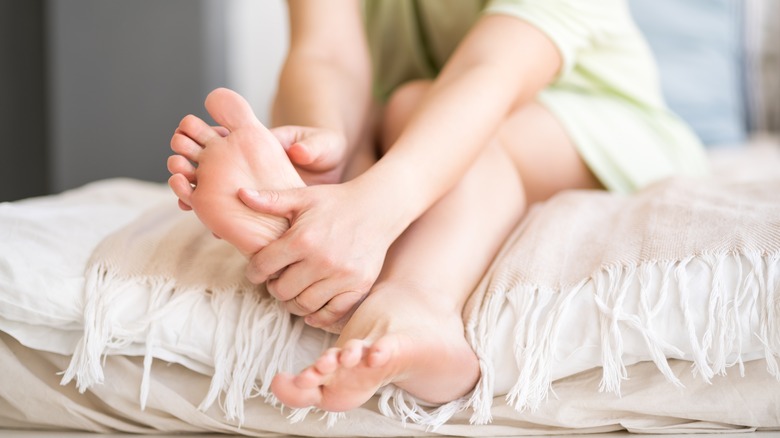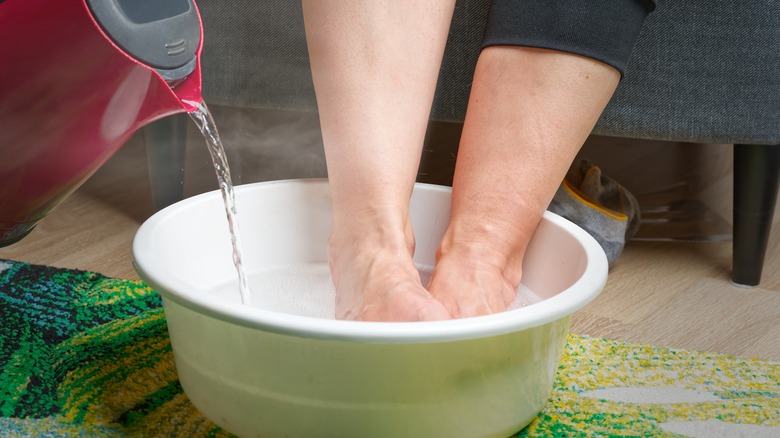How To Get Rid Of An Ingrown Nail
If you've ever had an ingrown nail, then you know they're as much painful as they are unsightly. They are also a very common nail problem. An ingrown nail is when the nail grows into the skin, instead of over it. This can happen with the sides of the nail growing into the nail bed or if the nail is cut too short, so it proceeds to grow into the skin. More often than not, ingrown nails happen to toenails, with the big toe being the most susceptible.
Although anyone can get an ingrown toenail, according to the Cleveland Clinic, athletes, people with diabetes or poor circulation, and those with nerve damage in their foot are at a higher risk of getting them. And while ingrown nails can certainly throw a wrench in your day, it's not the type of thing that usually requires having to go to the doctor's office. Instead, with the right tools and a sanitized area, you can take care of the issue yourself and send that ingrown packing.
How to safely get rid of an ingrown nail
If you have an ingrown nail, you probably know it. The nail bed feels tender, and is red and swollen too. In some cases, there may also be some bleeding or pus involved. To get the swelling down and reduce the pain, soaking the finger or toe in warm water for up to 20 minutes a few times a day, is a good place to start. Adding Epsom salt to the water will further help with inflammation, relaxation, and should the nail be infected or on its way to becoming infected, Epsom salt is good for that too. It's also excellent for stinky feet, so if it's a foot bath you're doing, you're killing two birds with one stone.
After each soak, thoroughly dry the area, then apply a topical antibiotic like Neosporin before bandaging it. It's important to keep the area as clean as possible and protected from any possible bacteria or debris. If the ingrown nail is on one of your toes, be smart about your shoe choices while it's healing. Leave the heels at home, ditch anything that might have a narrow toe, and kick off your shoes when you can. You want to continue all these things until the ingrown nail is fully healed.
What to watch out for
When trying to get rid of an ingrown nail, the worst thing you can do is pick at it. Picking can lead to an infection which, in turn, will lead to a medical situation. An easy way to tell if your ingrown nail has become infected is that the pain has gotten worse, reaching throbbing proportions, there's more pus, it's gotten darker, and it may smell. If this is the case, it's time to see a doctor. According to a 2021 study published in Informed Health, 20% of people who go to the doctor for foot-related issues are there for ingrown toenails, so you definitely won't be the first (or the last) to seek medical assistance for this particular problem.
The best way to deal with ingrown nails is to avoid getting them in the first place. You can do that by never clipping your nails too short and always using sharp clippers. On top of that, try to consistently wear comfortable shoes with wider footbeds. Granted, that doesn't mean you'll never get an ingrown nail, but being proactive in trying to avoid them will help.


